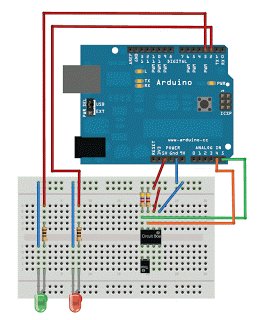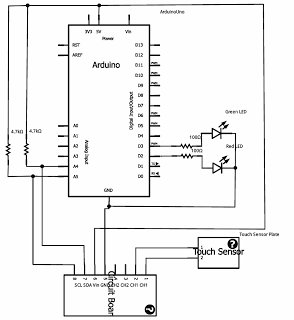If you ever wanted to integrate touch sensitivity into your project, this board could just do the trick. It’s a capacitive touch sensor. These sensors are used in our everyday consumer electronics like notebook trackpads, video game consoles, touchscreens…just to name a few.
 They work on the principle of alteration of the electrostatic field. The sensor builds up an electrostatic field which will be altered if conductive objects get in contact with the field.
They work on the principle of alteration of the electrostatic field. The sensor builds up an electrostatic field which will be altered if conductive objects get in contact with the field.
In this case your finger is the conductive object which triggers the change in the field. For detailed information about capacitive sensing have a look here.
The board works in I2C mode and needs pull-up resistors for the SDA and SCL pins. The operating voltage range is from 2.7V to 5.25V, so you can use either the 3.3V or 5V socket of the Arduino.
The setup is pretty easy. I attached two LEDs to indicate if the sensor plate was touched.
Figuring out the communication with the device is a little bit tricky.
 I found a really good blog post from Marcus Nowotny who provides a sample code, so you don’t have to get a headache while trying to understand the datasheet.
I found a really good blog post from Marcus Nowotny who provides a sample code, so you don’t have to get a headache while trying to understand the datasheet.
If you hooked up everything correctly, you can enjoy capacitive sensing in your project.
For more detail: Capacitive Touch Sensor on Arduino
